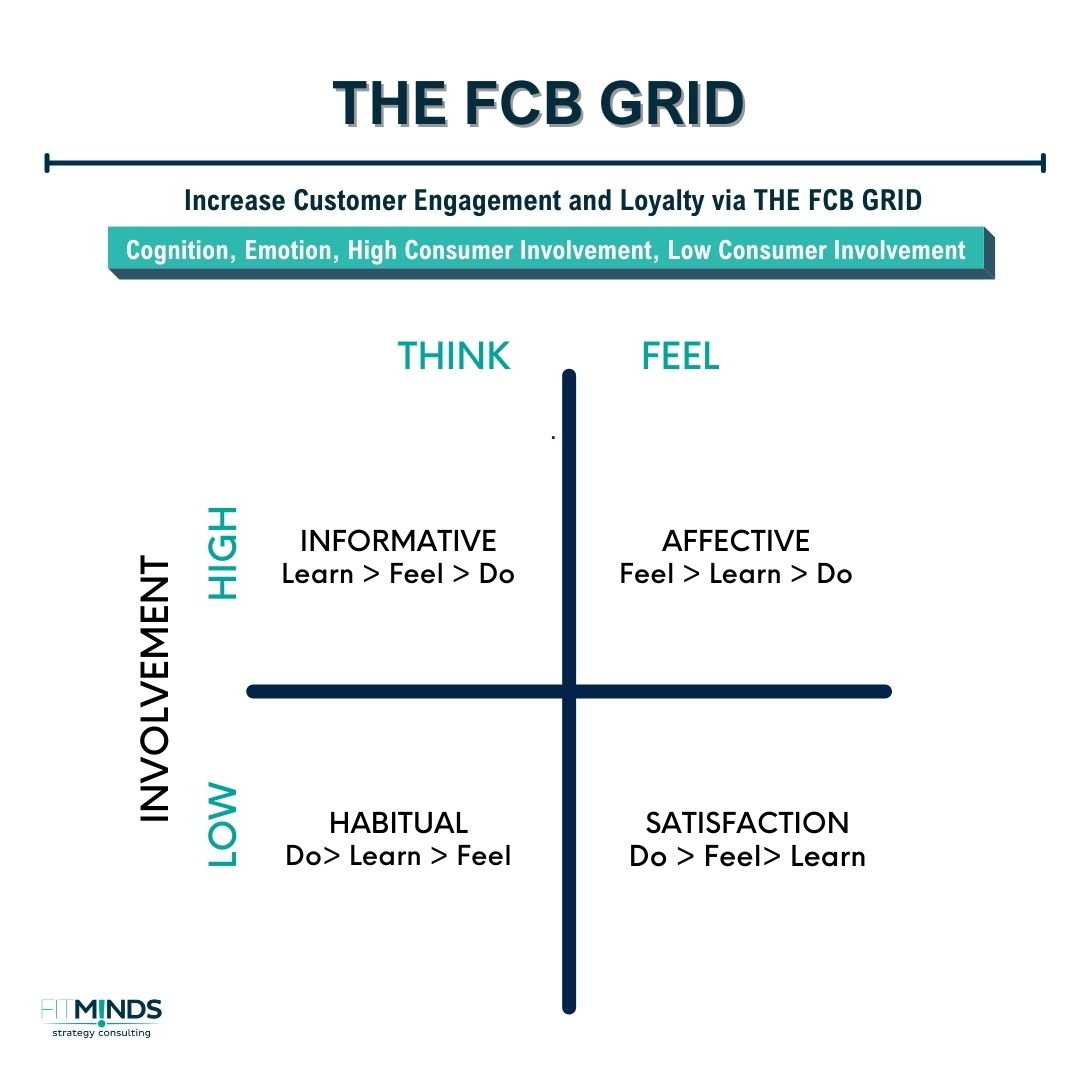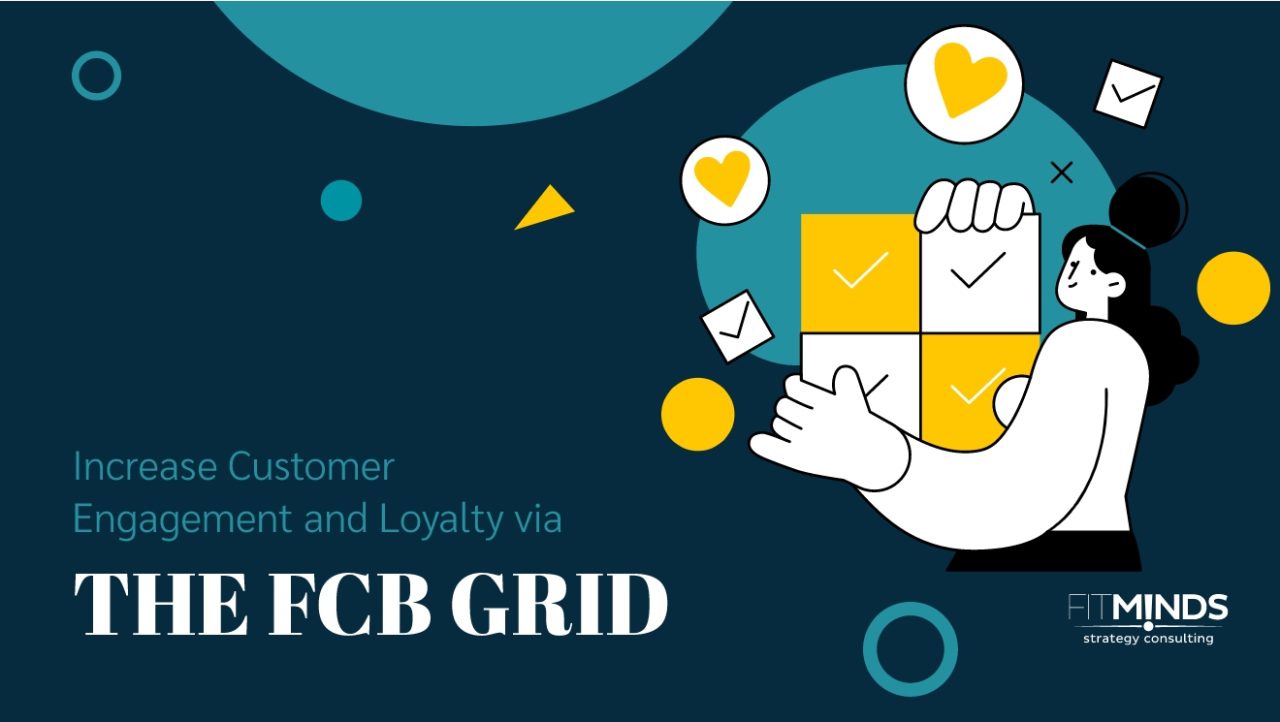The FCB Grid is a valuable marketing framework that assesses and classifies consumer products based on the level of consumer engagement and the cognitive processes involved in their decision-making. Richard Vaughn created the FCB Grid in the 1980s to aid advertising professionals in adopting a strategic and context-driven approach to comprehending consumers’ purchasing decisions.
Main Benefits of The FCB Grid
The FCB Grid is a valuable tool for marketers, empowering them to comprehend the decision-making process of consumers and craft messages that deeply connect with their audience, leading to highly effective communication.
The FCB Grid helps you:
- to segment products based on consumer attitude,
- to create effective advertising and communication strategies that are precisely tailored to the emotional or cognitive factors driving consumer decisions,
- to understand the emotional and cognitive triggers of the target audience,
- to make informed decisions about messaging and positioning.
Explanation of The FCB Grid
The FCB Grid, also known as the Foote, Cone, and Belding model, is a matrix encompassing four crucial factors: cognition, emotion, high consumer involvement, and low consumer involvement.
The x-axis covers the transition from rational thinking to emotional responses, while the y-axis represents the shift from high consumer involvement to low consumer involvement.

Informative (Quadrant 1): This category encompasses costly products that hold significant importance for consumers and demand deep analytical thinking during the decision-making process.
The potential buyer typically follows a sequence of steps, beginning with acquiring comprehensive product information, experiencing a desire to purchase, and ultimately completing the final buying transaction.
Marketing companies should focus on providing detailed information about the product, highlighting its features, benefits, and rational reasons for purchase. Content-rich and educational marketing approaches are effective in this quadrant.
Affective (Quadrant 2): Products with significant value and emotional appeal, that involve consumer engagement fall into the category of affective products.
Buyers typically follow a sequence of feel, learn, and do. This means they initially establish an emotional connection with the brand or product, acquire comprehensive knowledge about it, and ultimately make the purchase.
Companies should create emotionally engaging campaigns in this quadrant. These should connect with consumers on an emotional level and build brand loyalty. Storytelling, brand association, and content that evokes feelings can be key in fostering a stronger emotional connection between the brand and consumers.
Habitual (Quadrant 3): This category comprises everyday essential products. Consequently, customers typically have low involvement but engage in analytical decision-making when purchasing these items.
Buyers often initiate the process by obtaining the product, testing it to assess its functionality, and subsequently developing trust in the brand.
Marketing for habitual products should emphasize convenience and brand trust. These products are often purchased out of habit, so companies should maintain a consistent presence and offer incentives for repeat purchases.
Satisfaction (Quadrant 4): Products in this category are emotionally driven during the purchase, but they don’t demand significant consumer involvement in the buying decision.
The consumer typically follows a sequence where they first make the purchase, experience positive or negative feelings about it, and then learn more about the product.
Marketing strategies for satisfaction products should focus on generating positive emotions during the purchase. Encouraging reviews and building a community around the brand can be effective in this quadrant.
How to Apply The FCB Grid
To apply The FCB Grid to your business, FITMINDS is providing an adoption of the model that fits your company and your company’s needs. By using FCB Grid, organizations can create effective advertising and communication strategies.
Contact us to get more information or discover your probable personalized roadmap for The FCB Grid.
Additional Tips and Readings
- You can learn more about customer experience and engagement with The AARRR Pirate Metrics.
- You can learn more about customer decisions with Simonson & Rosen’s Influence Mix.
- For methods of customer behavior, you can read The Buy-Sell Hierarchy Model.
- To read more about the creation of habitual behaviors, you can check The Aida Model
Contact us to make informed decisions about messaging and positioning via The FCB Grid.



13 comments
Pingback: buying androxal canada drugs
Pingback: discount enclomiphene buy singapore
Pingback: discount rifaximin
Pingback: how to order xifaxan generic mastercard
Pingback: discount staxyn cheap in canada
Pingback: cheapest buy avodart generic mexico
Pingback: order dutasteride uk suppliers
Pingback: cheapest buy flexeril cyclobenzaprine generic order
Pingback: cheapest buy gabapentin lowest price viagra
Pingback: buy fildena lowest price
Pingback: get itraconazole canada no prescription
Pingback: kamagra levné krmení z dodávky
Pingback: kamagra prix
Comments are closed.